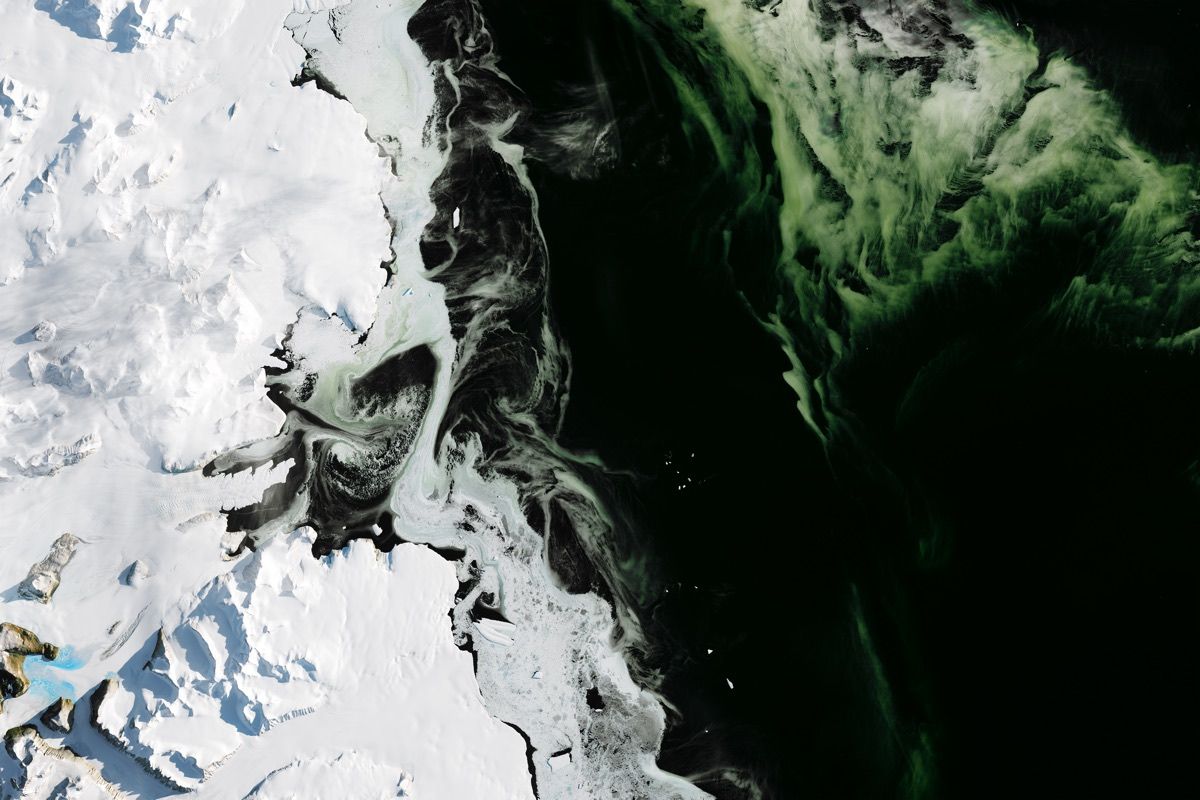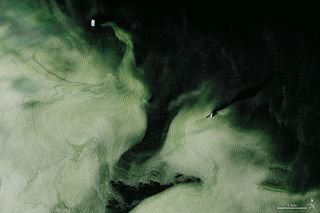Strange Green Ice Seen Floating in Antarctica's Ross Sea

No, Antarctica isn't busting out the green beer for St. Patrick's Day. But a new satellite image of the continent shows strange green ice floating in the Ross Sea.
The green-tinged ice is probably the work of phytoplankton, marine glaciologist Jan Lieser of Australia's Antarctic Climate and Ecosystems Cooperative Research Center told NASA's Earth Observatory, which released the image yesterday (March 9).
Photosynthetic plankton called phytoplankton (and algae) grow all around Antarctica in summer (which runs from October to February, because Antarctica is in the Southern Hemisphere). It's now autumn on the icy continent, but algae blooms can happen in the Antarctic fall, too, the Earth Observatory reported.
In 2012, Lieser and her colleagues noted an enormous bloom in late February and early March that was 124 miles (200 kilometers) long and 62 miles (100 km) wide. Scientists on an expedition to observe the green swirls found that the bloom was not free-floating algae, but green sea ice, or sea ice with algae growing on it.

The current late-season bloom appears to have gotten trapped in the slushy, just-forming sea ice, lending it a green hue. It's unclear whether the algae bloom is on the ice, or trapped within or beneath it.
On the other end of the globe, Arctic waters experience phytoplankton blooms, too. As in Antarctica, these tiny organisms are the basis of the food web. Scientists have found, however, that the Arctic's spring phytoplankton blooms are coming earlier. What's more, a second season of algae blooms has emerged in the fall, as sea ice has retreated.
Original article on Live Science.
Sign up for the Live Science daily newsletter now
Get the world’s most fascinating discoveries delivered straight to your inbox.

Stephanie Pappas is a contributing writer for Live Science, covering topics ranging from geoscience to archaeology to the human brain and behavior. She was previously a senior writer for Live Science but is now a freelancer based in Denver, Colorado, and regularly contributes to Scientific American and The Monitor, the monthly magazine of the American Psychological Association. Stephanie received a bachelor's degree in psychology from the University of South Carolina and a graduate certificate in science communication from the University of California, Santa Cruz.
Most Popular

